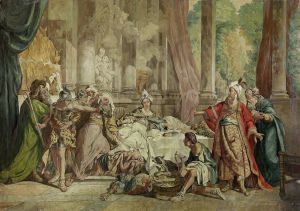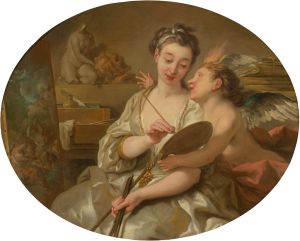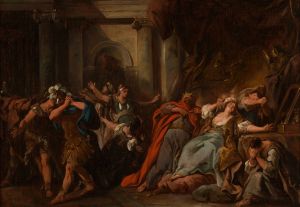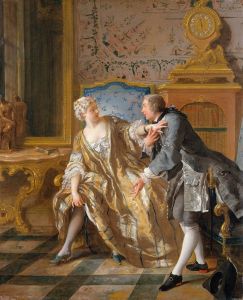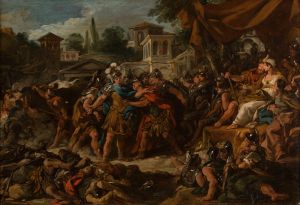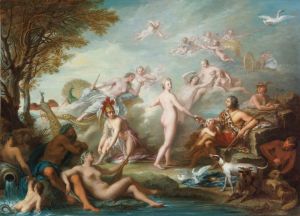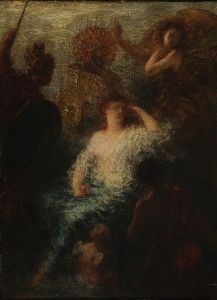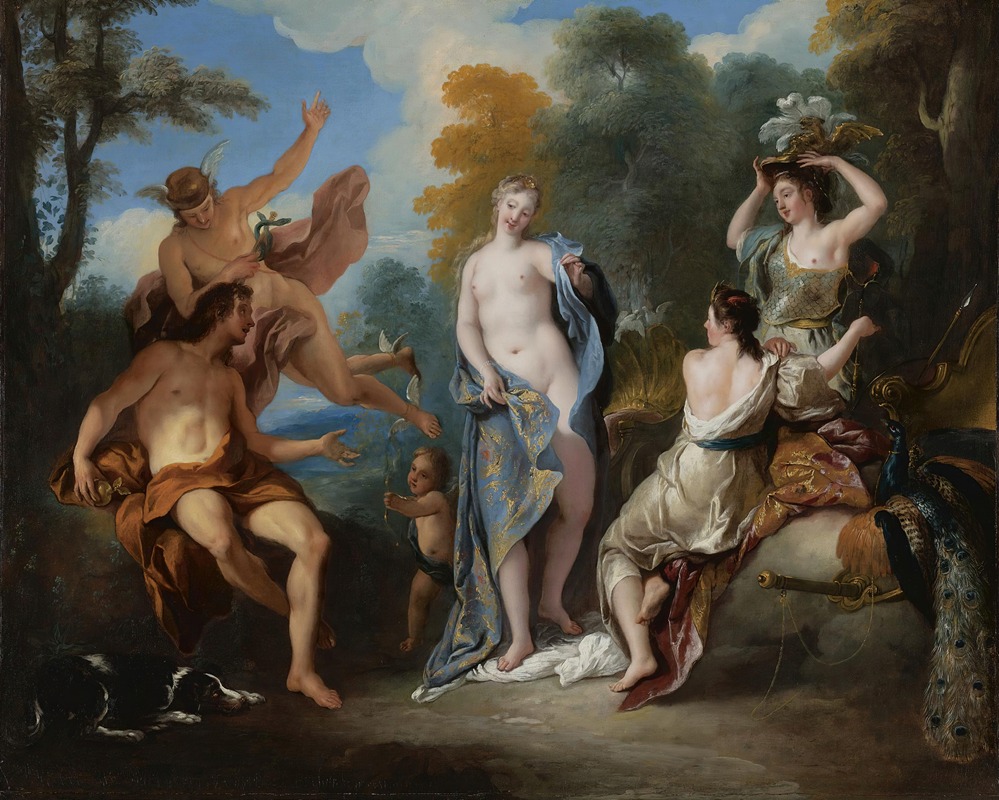
The Judgement Of Paris
A hand-painted replica of Jean-François de Troy’s masterpiece The Judgement Of Paris, meticulously crafted by professional artists to capture the true essence of the original. Each piece is created with museum-quality canvas and rare mineral pigments, carefully painted by experienced artists with delicate brushstrokes and rich, layered colors to perfectly recreate the texture of the original artwork. Unlike machine-printed reproductions, this hand-painted version brings the painting to life, infused with the artist’s emotions and skill in every stroke. Whether for personal collection or home decoration, it instantly elevates the artistic atmosphere of any space.
Jean-François de Troy's The Judgement of Paris is a notable painting created in 1736 by the French Rococo artist. De Troy was a prominent painter of his time, known for his historical and mythological scenes, as well as his contributions to the decorative arts. This particular work was commissioned as part of a series of mythological paintings intended to serve as tapestry designs for the Gobelins Manufactory, a prestigious French royal tapestry workshop.
The painting depicts the mythological story of the Judgement of Paris, a pivotal event in Greek mythology that ultimately led to the Trojan War. According to the myth, Paris, a prince of Troy, was tasked with deciding which of three goddesses—Hera, Athena, or Aphrodite—was the fairest. Each goddess offered him a bribe: Hera promised power, Athena offered wisdom and skill in battle, and Aphrodite tempted him with the love of the most beautiful mortal woman, Helen of Sparta. Paris awarded the golden apple to Aphrodite, setting in motion the events that would lead to the abduction of Helen and the Trojan War.
De Troy's interpretation of this myth is characteristic of the Rococo style, emphasizing elegance, sensuality, and a light, decorative aesthetic. The composition features Paris seated in a pastoral setting, surrounded by the three goddesses, each depicted with attributes that symbolize their respective domains. Aphrodite, often portrayed as the central figure, is shown in a graceful pose, emphasizing her beauty and allure. The scene is imbued with soft, pastel tones and a sense of movement, typical of Rococo art.
The painting was highly regarded for its refinement and served as the basis for a tapestry woven by the Gobelins workshop. Tapestries based on de Troy's designs were used to decorate royal residences and were considered a testament to the artistic and cultural achievements of 18th-century France. The original painting, along with others in the series, reflects the period's fascination with classical mythology and its use as a vehicle for exploring themes of beauty, desire, and human folly.
Today, The Judgement of Paris by Jean-François de Troy is recognized as an important example of Rococo art and a significant contribution to the tradition of mythological painting. The work is housed in the Musée des Beaux-Arts in Tours, France, where it continues to be appreciated for its artistic and historical value.





